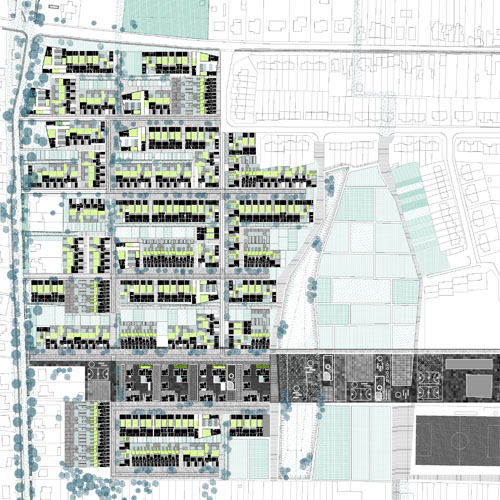| |
Studio Associato Bernardo Secchi Paola Viganò
Architecture | Urbanism | Landscape |
| social and sustainable housing in Stabroek - international competition |
| client: |
De Ideale Woning |
| program: |
housing development |
| date: |
2013 |
| |
|
| consultant: |
Dries Beys (ARA), 3E |
| team: |
studio
A.Calò, U degli Uberti, C.Greco, A.Rafful, G.Vaneste, P.Varloteaux, M.Wauters, K.Yoshida, Q.Zhang
|
| |
|
| |
|
| |
|
| |
|
| |
|
| |
|
| |
|
| |
|
| |
|
| |
|
| |
|
The objective of the proposal was more to propose an approach a final proposed project. The approach was made on the basis of five key assumptions .
Hypothesis 1 Rationalités_Water Project : The polders , large and flat plot of farmland, recovered from the Scheldt in Antwerp North are fragile constructions. In their processing, water management and microtopography are among the clearest agents.
Hypothesis 2 Landscapes_Metropolitan rurality monumentality of open space : the system of villages defined by the municipality of Stabroek is in a condition where the hybrid urban metropolitan integration , domesticity of village and agriculture are both still quite possible. Coexistence and strengthening these seemingly opposing configurations deserves specific design tools.
Hypothesis 3 Language_Under one roof : the vision for a new part of Stabroek overcomes social / private status in favor of a common urban language that can develop in many different typological solutions supported by figures of clear public spaces .
Hypothesis 4 Items_New Minimum : the contemporary lifestyles require a redefinition of the characters and qualities of minimum area surfaces. The plots are the structure of the Flemish territory inhabited. Flexibility and joints are the basis of any new thinking on housing.
Hypothesis 5 Time_To a rural Magnificence : The process of implementation of the project could be long and fragmented , given the "paradox of planning." Proposing figures coordinates , the proposal envisages the possibility of an unfinished project and its ability to improve the quality of a wider context. |
|

![]()